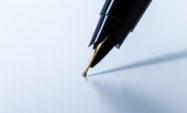SAP POS
Filter By
Browse By
- SAP Analytics and AI
- SAP Application Development and Integration
- All SAP Application Development and Integration
- SAP ABAP
- SAP ABAP Development Tools
- SAP ABAP Test Cockpit
- SAP API Management
- SAP BAPI
- SAP Basis
- SAP BRF
- SAP Business Application Studio
- SAP CMS
- SAP Design Studio
- SAP Development Tools
- SAP DevOps
- SAP EAI
- SAP EDI
- SAP Extension Suite
- SAP Fiori
- SAP Fiori Elements
- SAP Integration Suite
- SAP Low Code Application Development
- SAP Low Code Automation
- SAP Netweaver
- SAP Release Management
- SAP UI5
- SAP Web Application Server
- SAP Web IDE
- SAP Business Process Management
- SAP Center of Excellence
- SAP CIO
- SAP Customer Experience
- SAP Data and Data Management
- All SAP Data and Data Management
- SAP BW
- SAP BW/4HANA
- SAP Crystal Reports
- SAP Data Archiving
- SAP Data Center
- SAP Data Governance
- SAP Data Integration
- SAP Data Migration
- SAP Data Quality
- SAP Data Services
- SAP Data Strategy
- SAP Data Visualization
- SAP Data Warehouse Cloud
- SAP DMS
- SAP Document Control
- SAP EIM
- SAP ETL
- SAP ETL Tools
- SAP HANA
- SAP HANA Administration
- SAP HANA Deployment Infrastructure
- SAP HANA Studio
- SAP Master Data
- SAP Master Data Governance
- SAP MDM
- SAP Enterprise Architect
- SAP Enterprise Asset Management
- SAP ERP
- SAP Finance
- All SAP Finance
- SAP Accounting
- SAP AR AP
- SAP Asset Accounting
- SAP Billing Systems
- SAP BPC
- SAP BRIM
- SAP Cash Management
- SAP Central Finance
- SAP Controlling
- SAP COPA
- SAP Cost Center Accounting
- SAP Currency Risk
- SAP e-invoicing
- SAP FICO
- SAP Finance Automation
- SAP Advanced Financial Closing
- SAP Financial Consolidation
- SAP Financial Planning
- SAP FX Risk
- SAP General Ledger
- SAP Global Tax Management
- SAP Hyperion
- SAP Order to Cash
- SAP Payment Processing
- SAP Profitability Analysis
- SAP Rebate Management
- SAP S/4HANA Finance
- SAP SWIFT Compliance
- SAP Treasury Management
- SAP Universal Journal
- SAP Governance Risk and Compliance
- SAP Human Capital Management
- SAP Intelligent Technologies
- SAP Platform and Technology
- All SAP Platform and Technology
- SAP Business Technology Platform
- SAP Cloud
- SAP Cloud Connector
- SAP Cloud Integration Platform
- SAP Cloud Migration
- SAP Cloud Platform
- SAP Cloud Providers
- SAP Cloud Strategy
- SAP Digital Signature
- SAP Container Platform
- SAP HANA Enterprise Cloud
- SAP Digital Asset Management
- SAP Smart Forms
- SAP HEC
- SAP Digital Integration Hub
- SAP Hyperscalers
- SAP Infrastructure
- SAP Messaging
- SAP Quality and Testing
- SAP Security
- SAP Spend Management
- SAP Supply Chain Management
- All SAP Supply Chain Management
- SAP APO
- SAP Asset Management
- SAP Business Network
- SAP Digital Manufacturing Cloud
- SAP Digital Twin
- SAP EWM
- SAP IBP
- SAP Inventory Management
- SAP Label Printing
- SAP Logistics
- SAP Manufacturing
- SAP Manufacturing Automation
- SAP MES
- SAP MII
- SAP MM
- SAP MRO
- SAP MRP
- SAP Order Management
- SAP Plant Maintenance
- SAP PLM
- SAP Production Planning
- SAP S&OP
- SAP SD
- SAP SPM
- SAP Supply Chain Planning
- SAP Track and Trace
- SAP Transportation Management
- SAP System Administration
What Is Point of Sale?
Point of Sale (POS) represents the customer payment transaction for a brick and mortar or online retailer. As part of the POS, retailers rely on hardware and software to complete the transaction and process the payment.
POS: More than a Transaction
While the POS may appear simply as a transactional activity, it has implications for customer experience and profit for the retailer. Customers want and expect a checkout process that is quick, hassle-free, and easy to navigate.
What Is Point of Sale?
Point of Sale (POS) represents the customer payment transaction for a brick and mortar or online retailer. As part of the POS, retailers rely on hardware and software to complete the transaction and process the payment.
POS: More than a Transaction
While the POS may appear simply as a transactional activity, it has implications for customer experience and profit for the retailer. Customers want and expect a checkout process that is quick, hassle-free, and easy to navigate.
The POS is also critical for understanding customer preferences in terms of product selection and variety. Retailers gain valuable analytical insight into which products are selling, at what time of day, and in what quantity. This can provide better decision-making for the marketing and sales teams.
Lastly, integration between the POS, inventory management, and operational systems is critical for maintaining supply and demand balance and identifying potential revenue opportunities. Replenishment is essential for retailers to ensure the product is on the shelf where and when customers need it. Data from the POS should also be shared with suppliers to collaborate on product promotions and new product introductions.
SAP Customer Checkout Application
SAP’s point of sale solution is SAP Customer Checkout. According to SAP, the following are key POS capabilities of the application:
- Manage sales, returns, payments, coupons, and gift cards with a central POS system
- Access real-time reports, control sales and financial results, and extend and scale the application with flexibility
- Integrate with SAP S/4HANA or other ERP systems, or use as a stand-alone application
Key Consideration for SAPinsiders
- Case Study: AGRAVIS Transforms Its POS System for the Future. In this SAP case study, German agricultural trading company AGRAVIS needed to replace its legacy POS system to meet new cash register regulations and future POS transaction requirements. The company wanted a solution that integrated with its current software landscape, but also created a single source of truth of real-time sales and inventory data. AGRAVIS also required a solution that enabled capabilities for future omnichannel retailing. It chose the SAP Customer Checkout application with native SAP S/4HANA integration and linkage to existing legacy warehouse management systems.
A vendor in the point-of-sale space includes: Verbella.
365 results
-

- SAP Operating Systems
 Premium
Premium
How to Prepare for a Comprehensive System Audit and Technical Review of SAP Access Control 10.0
Reading time: 44 mins
Learn invaluable tricks and tips for overcoming top auditing issues specific to an SAP Access Control 10.0 system. Key Concept A system audit is an exercise performed to gain assurance that defined controls work as intended, thereby eliminating the likelihood of fraudulent or malicious activities in the enterprise system. It involves the verification of conformance...…
-

 Premium
Premium
How to Create an Automatically Posted Intercompany Sales Journal Entry
Reading time: 16 mins
The author explains how his company implemented automatic posting of intercompany invoices. The key to the process is learning how three different things in R/3 fit together – an output type, an IDoc, and the EDI method of data transfer. The standards already in the software (Releases 4.0x, 4.5x, and 4.6x) allow purchase orders (POs)...…
-

 Premium
Premium
Time-Saving Tips for Testing Electronic Bank Statement in BAI2 Format
Reading time: 6 mins
Learn some tips on how to optimize the implementation and testing of the BA12 electronic bank statement file format for financial reporting. Key Concept The BA12 electronic bank statement file format is used to transfer financial data to perform electronic cash management balance reporting. Balance reporting transmissions include data describing hundreds of different types of...…
-
-

 Premium
Premium
What’s the Next Generation in SAP Application Development?
Reading time: 13 mins
SAP Professional JournalUsing five scenarios, James Wood shows how new technologies in the SAP landscape may shape the way that applications are designed and developed in the months and years to come. In the past several years, there has been a huge shift in the SAP development landscape. While most of the SAP development community...…
-

- SAP Payroll
 Premium
Premium
Learn New Methods For Comparing Payroll Results and Improve Your Payroll Implementation Projects
Reading time: 11 mins
Get tips and ideas for how to perform a payroll parallel run. A payroll parallel run is the comparison of payroll results between a legacy payroll system and a new SAP payroll system that is being implemented. The results are compared line by line and wage type by wage type between the two systems. Key...…
-

 Premium
Premium
How to Use SAP’s Multiple Calendar Tool for Asset Accounting to Manage Multiple Fiscal Calendars
Reading time: 10 mins
Discover how the Multiple Calendar Tool from SAP solves the requirement to create financial statements or tax values in more than one fiscal calendar. Key Concept The Multiple Calendar Tool is an add-on component to Asset Accounting that provides the required functionality to facilitate the creation of accurate financial statements for different fiscal calendars. The...…
-

 Premium
Premium
Cost Conditions in R/3: Are You Sending Your Financials Team an Unpleasant Surprise?
Reading time: 22 mins
Cost values sent to the R/3 General Ledger and the CO-PA ledger can be based on different logic if you do not properly maintain the cost and future price in the material master. The key is to understand the relationship between the R/3 future price feature and condition type VPRS. Key Concept VPRS is one...…
-
-

 Premium
Premium
Manage Multiple Employment Scenarios with Concurrent Employment
Reading time: 24 mins
Learn how the Concurrent Employment component can help streamline and optimize the management of employees who hold multiple positions in your company. Key Concept Concurrent Employment is an SAP HCM component that handles a scenario in which an employee works in two or more positions within one organization. Flexible working requirements have led to many...…
-

- SAP Process Analysis
 Premium
Premium
Gauge a Company’s Risk Exposure Using Market Risk Analyzer
Reading time: 31 mins
Learn how to implement SAP’s Market Risk Analyzer. The analysis reports in Market Risk Analyzer help an organization or, more specifically, a treasury department, to assess and quantify the risks of its financial positions. Once the risks of an organization are analyzed and quantified, they can be more easily controlled. The inputs to Market Risk...…
-

 Premium
Premium
Maximize the Capabilities of Enhanced Product Planning and Planner Home Page Functionalities in SAP SCM 7
Reading time: 26 mins
Learn steps to configure Enhanced Product Planning (EPP) and Planner Home Page (PHP) functionalities in SAP SCM 7 enhancement package 3. The PHP provides a performance overview of key products in the business user’s or planner’s portfolio through the use of the demand planning (DP), supply network planning (SNP) and production planning and detailed scheduling...…
Become a Member
Unlimited access to thousands of resources for SAP-specific expertise that can only be found here.
Become a Partner
Access exclusive SAP insights, expert marketing strategies, and high-value services including research reports, webinars, and buyers' guides, all designed to boost your campaign ROI by up to 50% within the SAP ecosystem.
Upcoming Events
Related Vendors
Your request has been successfully sent


